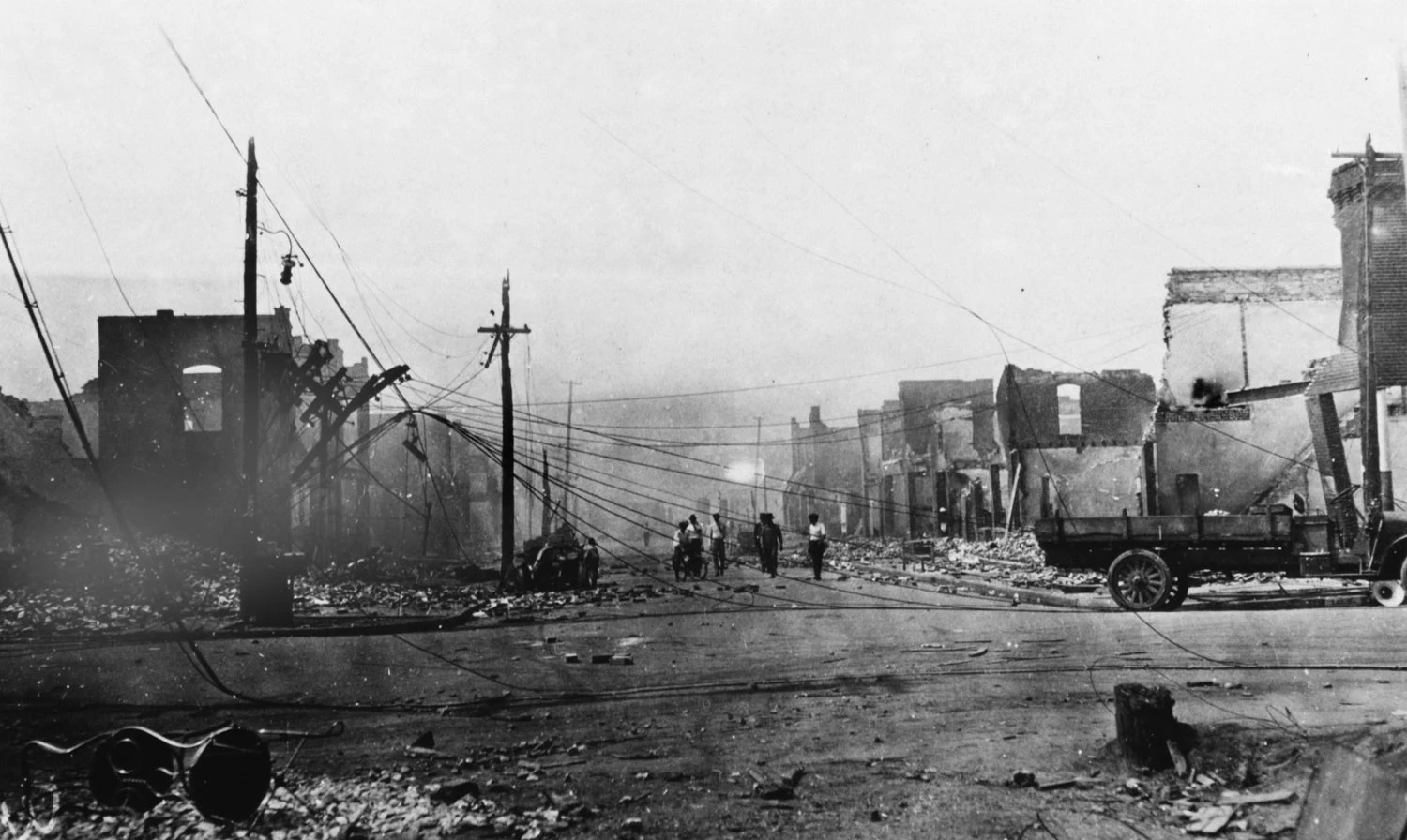The 1921 Tulsa Race Massacre--A Legacy of Injustice and the Path Toward Reparations
The 1921 Tulsa Race Massacre stands as one of the most egregious acts of racial violence in American history. Over the course of 18 hours, a prosperous Black community in Tulsa, Oklahoma, was destroyed by a coordinated white mob, resulting in the deaths of over 300 Black residents, the burning of more than 1,100 Black-owned homes, and the displacement of thousands. This atrocity not only decimated the Greenwood District, known as "Black Wall Street," but also left a legacy of systemic injustice that has persisted for over a century.
For decades, the massacre was met with denial and cover-up by local and state authorities. Survivors and their descendants were denied justice, and efforts to rebuild were thwarted by discriminatory policies such as redlining, eminent domain, and the construction of highways that displaced Black residents and hindered economic growth in Black neighborhoods. The Greenwood District, once a thriving center of Black commerce, was left in ruins, and the trauma endured by the community was largely ignored by those in power.
However, in a historic move, Tulsa Mayor Monroe Nichols, the city's first Black mayor, announced a $105 million reparations package aimed at addressing the long-standing harms caused by the massacre. The plan includes $24 million for affordable housing and homeownership, $60 million for historic preservation, and $21 million for scholarships, small business grants, and the identification of victims buried in mass graves. This initiative, backed by the Greenwood Trust and private capital, represents a significant step toward restorative justice and acknowledges the enduring impact of the massacre on the Black community in Tulsa.
The reparations package is a response to decades of advocacy by community leaders and descendants of survivors who have called for tangible investments in housing,
education, and economic empowerment. Kristi Williams, a justice activist and descendant of massacre survivors, expressed hope that this initiative would restore the community's trajectory and provide a foundation for future generations.
While the reparations plan is a significant milestone, it is not a panacea. The massacre's legacy is deeply embedded in the social and economic fabric of Tulsa, and true justice will require continued efforts to dismantle systemic racism and address the disparities that persist. As the city moves forward, it must ensure that the voices of affected communities remain central to the decision-making process and that the reparations lead to meaningful change.
The 1921 Tulsa Race Massacre serves as a stark reminder of the depths of racial violence and the long road to justice. While the reparations package is a step in the right direction, it is only through sustained commitment to equity and accountability that the wounds of the past can begin to heal.

























